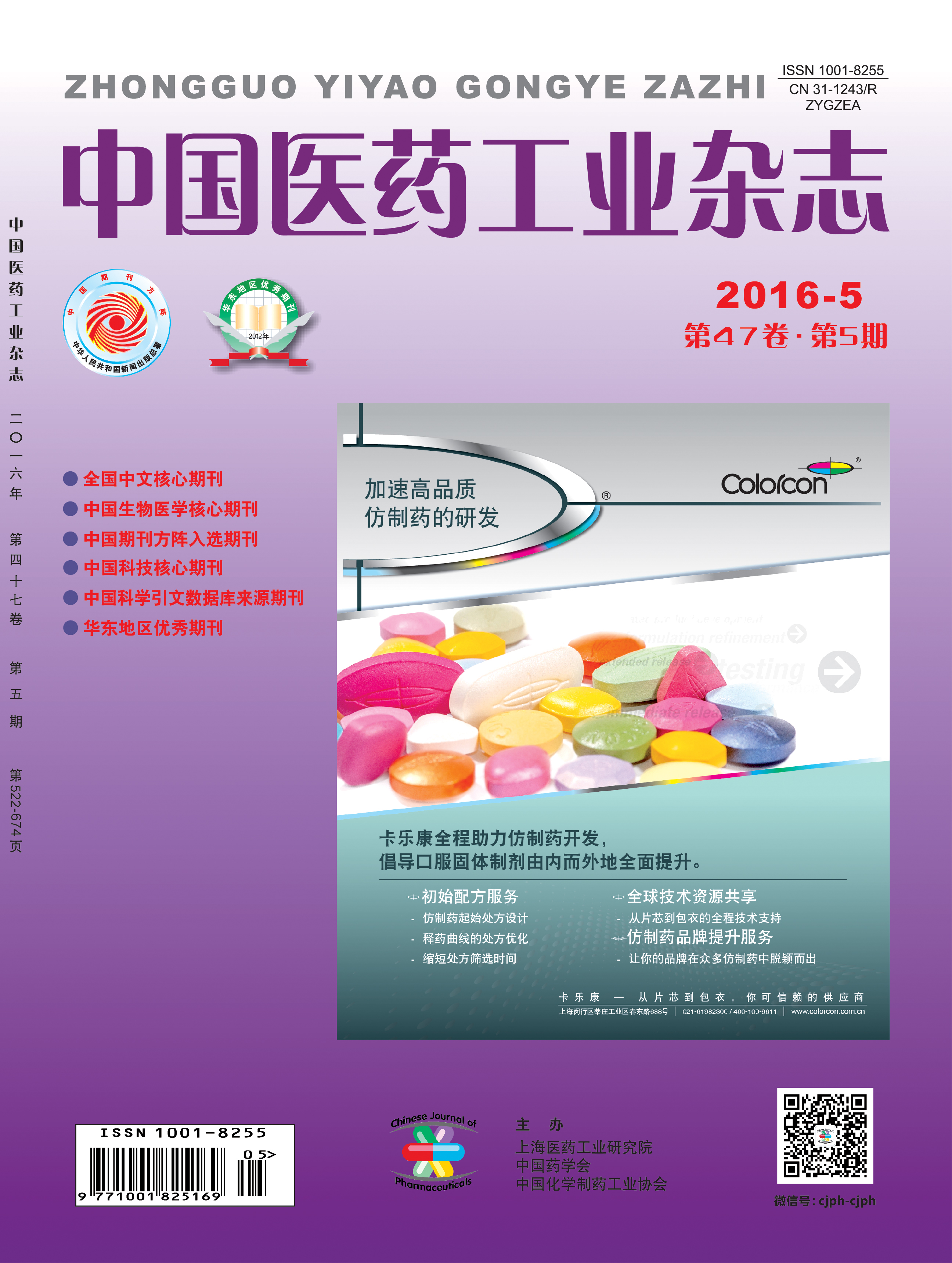LI Yang, LI Jin, TAO Tao*
On the basis of a literature survey, this paper summarizes the characteristics and applications to oral solid preparations of Eudragit, a series of commonly used pharmaceutical excipients. The film forming process of Eudragit depends on its minimum film forming temperature (MFT) and glass transition temperature (Tg). Eudragit polymers can be divided into pH- and osmotic-dependent acrylic resins. pH-Dependent acrylic resins can be dissolved in different
pH media and with popular applications to the site-specific delivery systems. For example, the Eudragit series E are commonly used in solubilization, taste-masking, moisture-protection. Osmotic-dependent resins can be used as sustainedrelease materials. Moreover, several application technologies, such as EudrapulseTM, EudramodeTM and EudracolTM, based on the combination of insoluble Eudragit and other materials, are developed to regulate the drug release rate. In addition, the applications of Eudragit to novel pharmaceutical technologies (3D printing and electrostatic spinning) are briefly introduced.
